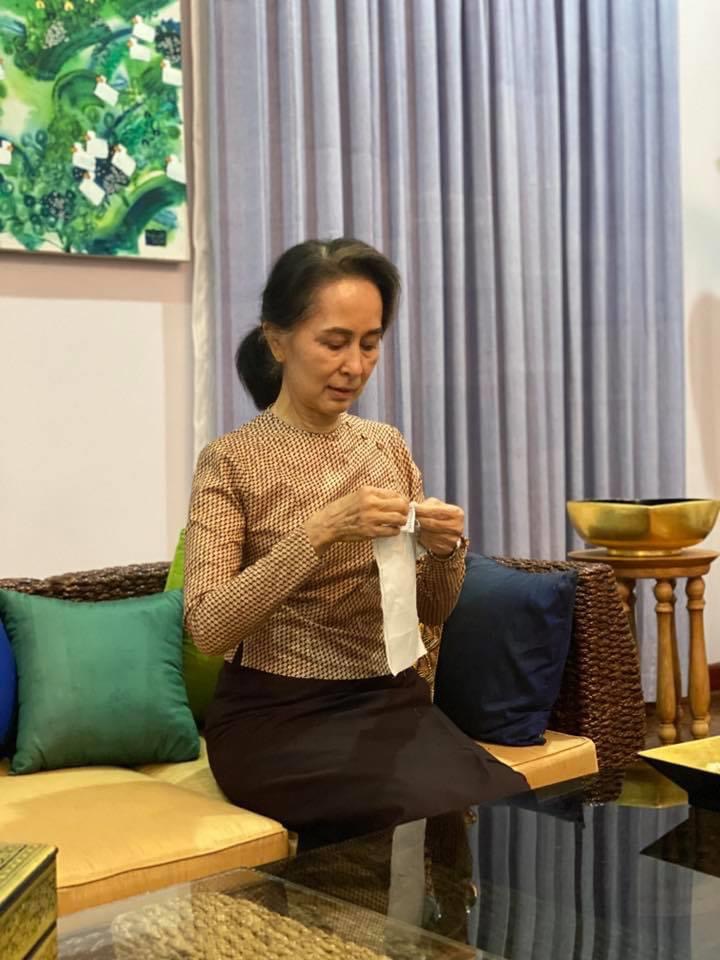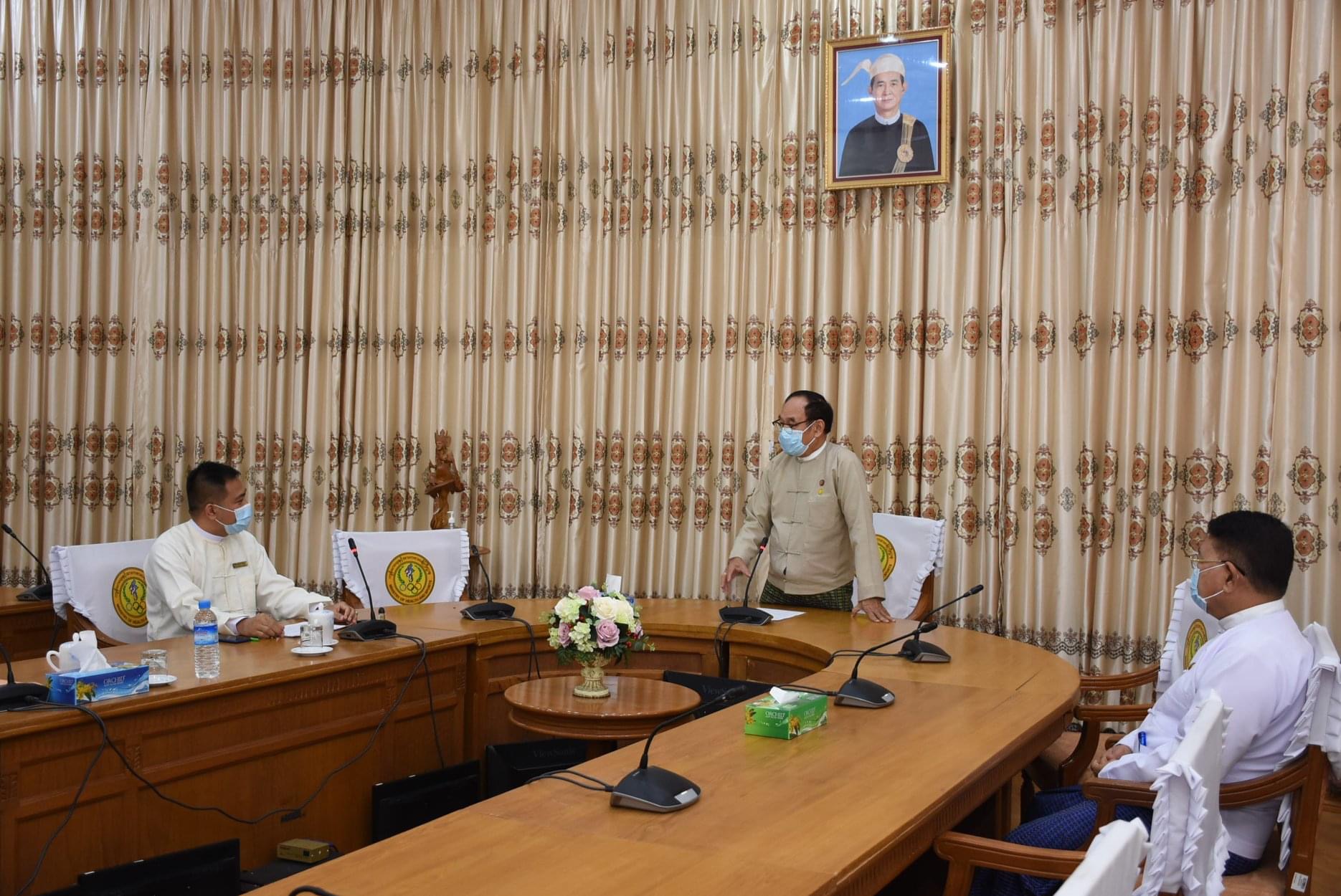YANGON—Myanmar has reported a total of 203 COVID-19 cases as of Tuesday, including six deaths. According to the Ministry of Health and Sports (MOHS), a total of 123 patients are recovering from the disease.
Since Myanmar, one of the poorest countries in South East Asia, confirmed its first case in late March, the government has used aggressive quarantining, imposed a strict stay-at-home order, promoted social distancing and imposed legal actions against those who break laws related to containment and prevention measures. As the country has limited financial resources, medical supplies, technology and human resources, these strategies have helped to curb the spread of the disease
Here, The Irrawaddy looks back at the Myanmar government’s preparations, responses and actions over nearly five months battling the global pandemic.
May 25: The government announced that Myanmar households will not need to pay for the first 150 units of electricity they use until the end of May.
May 23: Myanmar’s COVID-19 cases surged to 201 after 15 imported cases were detected over a three-day period.
May 22: The Myanmar Union Parliament approved a proposal to borrow a US$50 million emergency loan from the World Bank to improve hospital systems and public health emergency preparedness.
May 21: The government reported that it has spent a total of 19.46 billion kyats (US$13.8 million) for COVID-19 treatment and prevention.

May 18: Myanmar’s Union minister of health and sports submitted a draft of the new Prevention and Control of Communicable Diseases Law to the Lower House of Parliament. The draft law is aimed at improving the government’s effectiveness in preventing and controlling outbreaks of infectious disease.
The government also said it will soon provide cash assistance for those struggling across the country because of COVID-19.
May 14: The government extended restrictions, including a ban on public gatherings and the suspension of visas and international flights, until May 31.

May 16: MOHS ordered COVID-19 tests for all Myanmar nationals arriving from foreign countries.
May 13: Yangon eased some restrictions on businesses in four townships—Mingaladon, Hlaing Tharyar, Shwepyithar and Botahtaung—after they reported no new cases for 20 days. Streets were unblocked and restaurants and tea shops were allowed to reopen.

May 9-11: Yangon, Mandalay and Ayeyarwady regional governments imposed fines or legal action against anyone not wearing a mask outside of their home and anyone who gathers in a group of more than four people.
May 6: MOHS conducted door-to-door medical checks in Yangon’s Insein Township, where nearly 19 percent of the country’s COVID-19 cases had been reported.

May 7: The State Counselor announced an online homemade cloth face mask-making contest aimed at increasing awareness of the importance of wearing masks when going outdoors.

April 29: Myanmar saw its sixth death from the coronavirus.

April 28: The government formed a committee to coordinate and collaborate with ethnic armed organizations to prevent, control and treat COVID-19.
The government launched its COVID-19 Economic Relief Plan (CERP), which seeks to mitigate the economic impact of the pandemic by implementing new measures and response plans, ranging from monetary reforms and increased government spending to steps to strengthen the health care system in the country.
April 24: The government formed the National Volunteer Steering Unit to support the welfare of volunteers participating in the fight against COVID-19 across the country.
The government extended its suspension of visas and commercial flights until May 15.
April 22: The Health Sector Contingency Plan was published.
April 19: The Ministry of Labor ordered all factories to close until April 30 and said they could only reopen when they had adopted COVID-19 preventive measures and these measures had been inspected.

April 18: The Yangon regional government announced lockdown and stay-at-home measures for the seven townships in Yangon Region with the most cases.
The government imposed a nighttime curfew in Yangon.
A 78-year-old man with hypertension and diabetes died of COVID-19 after he contracted the disease through contact with someone at a religious gathering.

April 12: An 85-year-old COVID-19 patient with hypertension, diabetes and heart disease died while in isolation at Yangon General Hospital.
April 11: The government extended the length of mandatory quarantines for all arrivals in the country from 14 to 21 days.
April 10: The MOHS started testing all contacts of COVID-19 patients as well as those in quarantine.
April 8: The government started a national call center for COVID-19.
Two COVID-19 patients died in Yangon.
April 7: The National-Level Central Committee on Prevention, Control and Treatment of Coronavirus Disease 2019 announced that the government will not charge residents for the first 150 units of electricity they use until the end of April. The exemption excludes embassies, United Nations agencies and international organizations.

April 6-7: Yangon, Mandalay and Sagaing regions as well as Shan, Kayah, Kachin and Mon states imposed restrictions on residents’ movements, including ordering people to stay home, shutting down public transportation networks and banning festive activities.

April 5: Daw Aung San Suu Kyi said on Facebook that her government was planning to support the most vulnerable workers during the stay-at-home period.

April 4: Daw Aung San Suu Kyi urged citizens to stay at home as much as possible and told them not to lose hope because they can’t go out and throw water during the Myanmar New Year’s Water Festival, Thingyan.
The government ordered its employees not to travel or go to see family during the New Year holidays.
April 3: The State Counselor held talks with people in Karen State contributing to the country’s fight against the pandemic.

April 2: Myanmar imposed a mandatory quarantine for all migrant workers arriving back in the country after one migrant who returned from Thailand tested positive for COVID-19.
The Yangon government imposed a stay-at-home order for citizens during the water festival holiday from April 10 to April 19, except for people who contributing to COVID-19 protection, control, treatment and support.
April 1: Daw Aung San Suu Kyi opened a personal Facebook account to connect with people effectively during the coronavirus pandemic.
The State Counselor held discussions with healthcare professionals and philanthropists contributing to the country’s fight against the pandemic.

March 31: Daw Aung San Suu Kyi said that rather than lockdowns, some communities may face community quarantine. She urged citizens to stay at home as much as possible.
The government banned all foreigners from entering the country.
Myanmar reported its first coronavirus death, a 69-year-old man who died in Yangon due to acute respiratory distress syndrome with septic shock, severe community-acquired pneumonia and underlying nasal cancer, for which he was receiving radiotherapy.

March 30: The government formed an emergency task force with military and civilian ministries to support measures around law enforcement and stability and to step up government efforts to respond to the pandemic in the country.
The Ministry of Commerce imposed a ban on price gouging for food, medicines and equipment related to the prevention and treatment of COVID-19 as well as on hoarding such items.
March 29: The government banned incoming commercial flights until April after eight travelers tested positive for COVID-19.
MOHS warned that the country was at very high risk of a “major outbreak” of COVID-19 as large numbers of migrant workers returned from Thailand.

March 28: Myanmar suspended all types of visas for foreign nationals from all countries except diplomats, UN officials and ship and aircraft crews.
March 27: Restaurants nationwide are ordered to only provide takeaway services.
March 25: The Myanmar government ordered half of its employees to stay at home in order to reduce the risk of spreading COVID-19.
Courts across the country suspended hearings.
March 24: Daw Aung San Suu Kyi urged citizens to report to a hospital immediately if they have virus symptoms, saying that “early treatment can reduce fatality.” She also warned against hoarding supplies and said people must buy only what they really need in order to prevent panic buying.
The government ordered 14-day mandatory quarantines at government facilities for all travelers, except diplomats and UN officials, arriving from any country.

March 23: Myanmar confirmed its first case of COVID-19.
March 22: The government began community-based facility quarantines.
March 21: The State Counselor launched a public handwashing campaign as a precautionary measure.
March 20: The government announced restrictions for arrivals from 17 countries and announced 14-day quarantines for those arriving from high-risk countries.
March 18: The government announced an initial stimulus package to cushion the impact of COVID-19 on the country’s economy, including 100 billion kyats (nearly US$70 million) worth of loans, eased deadlines for tax payments and tax exemptions for Myanmar-owned businesses hit by the pandemic.
March 17: The Ministry of Foreign Affairs (MOFA) told all diplomats based in the country to postpone large events until the end of April and to temporarily close all schools run by foreign embassies in Yangon.
March 16: A large number of Myanmar nationals returned home from Thailand through Myawaddy.
In a televised message, the State Counselor asked the public to support the government’s efforts to mitigate the outbreak’s negative impacts on the country and its citizens.
The Ministry of Information (MOI) ordered cinemas across the country to close at least until the end of April.

March 15: Myanmar announced mandatory quarantines and monitoring for arrivals from seven high-risk countries.
March 13: The government formed the COVID-19 Control and Emergency Response Committee, led by military-appointed First Vice President U Myint Swe, and a working group committee to address the possible impacts of COVID-19 on the country’s economy.
The government banned public gatherings of more than four people, including the Thingyan Water Festival, until the end of April.
March 11: The WHO declared the COVID-19 outbreak to be a pandemic.
March 6: The government released a management protocol and clinical management guidelines for COVID-19 Acute Respiratory Distress Syndrome (ARDS).

Feb. 28: The government banned mass gatherings.
Feb. 20: The National Health Laboratory began testing for COVID-19.
Feb. 3: The central coordination committee on COVID-19 met.
Feb. 1: The government evacuated Myanmar students from Wuhan in China.
The government suspended visa on Arrival.
Jan. 31: Myanmar began investigating its first possible case of COVID-19.
Jan. 30: Myanmar formed the National-Level Central Committee for COVID-19 Prevention, Control and Treatment.
Jan. 28: The inter-ministerial working committee on COVID-19 meets for the first time.
The MOHS convenes its first daily meeting on COVID-19.
Jan. 25: MOHS head Dr. Myint Htwe visited Yangon International Airport and Yangon’s Waibargi Specialist Hospital for Infectious Diseases to check on their preparedness for a possible outbreak.
Jan. 24: Myanmar Union-level ministers met to discuss COVID-19.
The country’s Emergency Operations Center went into Alert Mode.
Jan. 8: The permanent secretary of MOHS chaired an emergency preparedness meeting.
Jan. 5: Myanmar began preparing for a possible outbreak.
Jan. 4: MOHS was notified in a WHO South-East Asia & ASEAN+3 Senior Officials Meeting on Health Development about unexplained pneumonia cases in Wuhan City, China.
You may also like these stories:
Myanmar Parliament Approves $700-Million IMF Loan for COVID-19 Spending
Myanmar Power Plants Delayed by COVID-19 to Start Operating in Coming Months
Xi Hopeful on Belt and Road Projects in Myanmar During COVID-19












